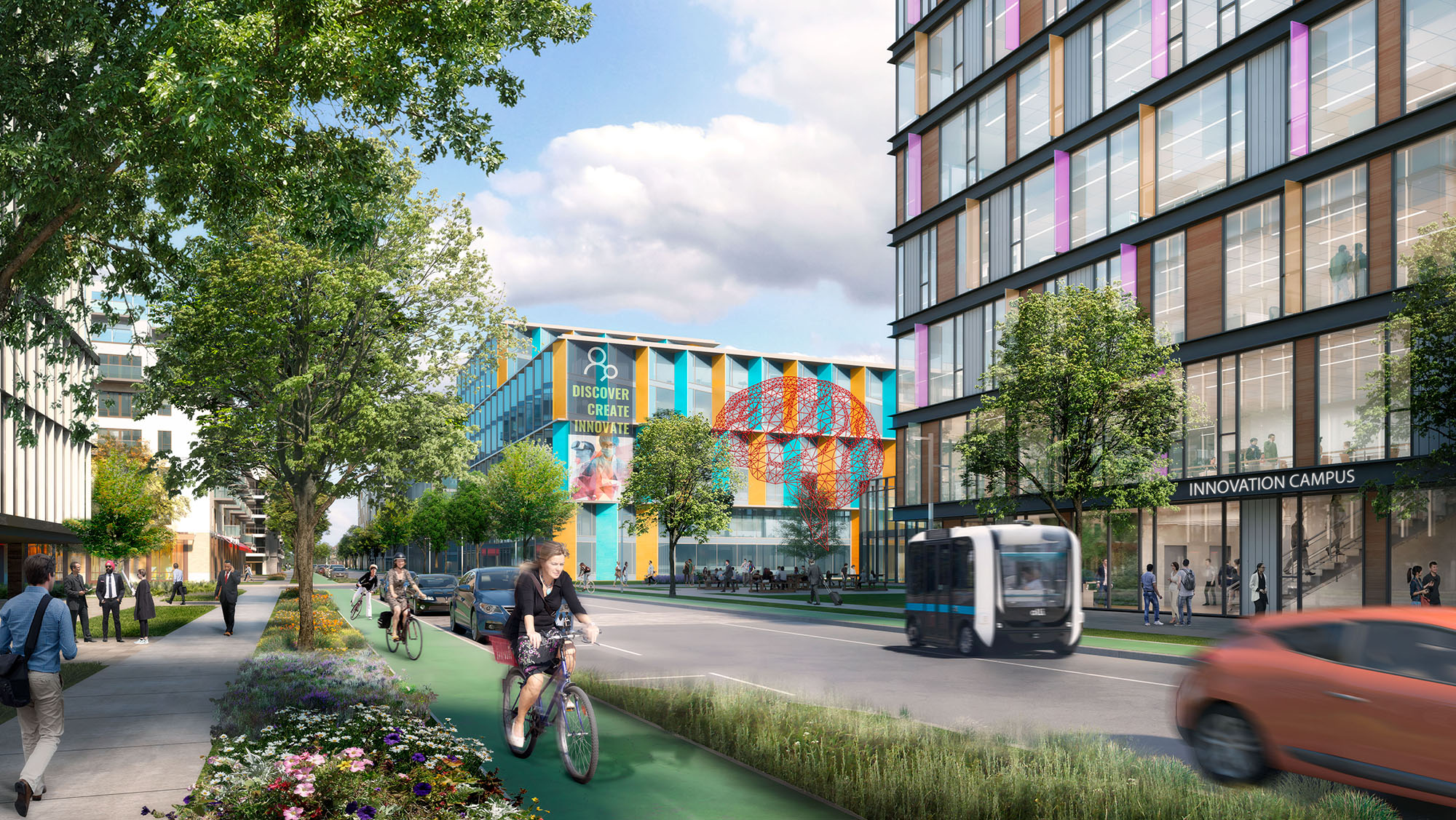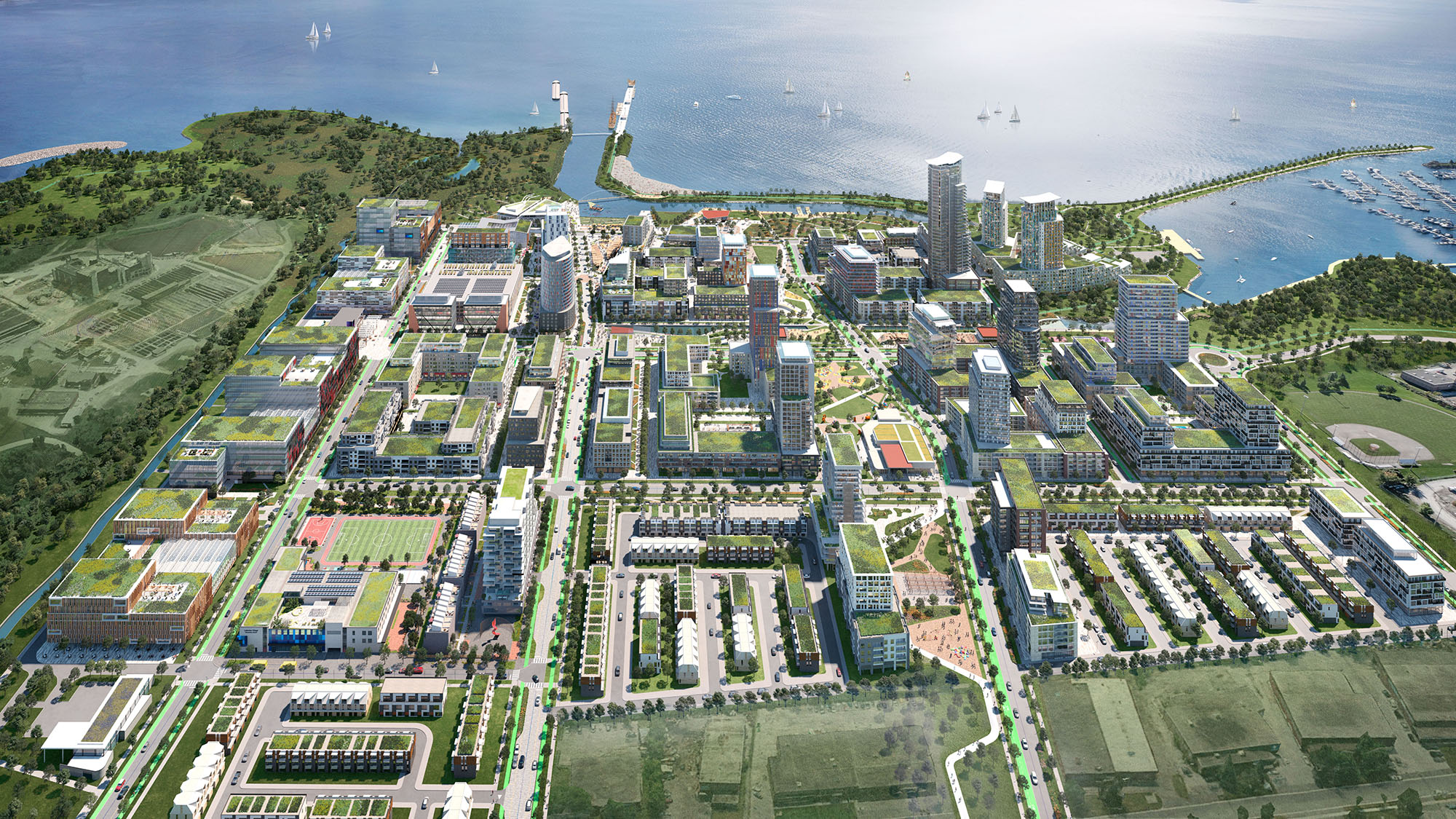Smart & Sustainable
Creating a Connected Community

Smart & Sustainable

Lakeview Village will be a connected community.
That means there will be a number of ways for people to access the things they need on a daily basis.
It means reducing a person's reliance on a car and enabling them to take safe and reliable transit to work.
It means giving someone the ability to walk to the grocery store or stroll through brightly lit streets to meet friends at a restaurant.
It means building bike lanes and trails that families can cycle along for a day of adventure or to pick kids up from school.
It means building a community that enhances the health and well-being of all its residents and that caters to their unique transportation needs.
It means following the guiding principles set forward in the Lakeshore Connecting Communities Transportation Master Plan.
It means:
It means focusing on our ultimate goal of building a connected community that benefits everyone - today, tomorrow, and into the future.

At Lakeview Village, we’re looking beyond the car to create a connected community that gives everyone - regardless of the age and stage of life they’re in - access to a variety of transportation options to help them get from point A to B and everywhere in between.
This means enabling car-free mobility through new infrastructure for cycling and pedestrians (trails, pathways, routes), bringing MiWay Bus service into the fabric of the community with a new bus route (complete with two stops), and integrating with the future BRT and LRT line through the Lakeshore Connecting Communities Transportation Master Plan – a long-term vision for transit and corridor improvements along Lakeshore Road from 2020 to 2041.
We know cars are the largest source of Canada’s transportation emissions. This plan will ensure there are efficient and convenient transit options to reduce reliance on auto-based living.
By 2030, there will be rapid bus service along Lakeshore Road, which means faster, more reliable services and connections right at the time the first phase of residents will begin living in and moving around Lakeview Village. During peak hours, the BRT is expected to increase from moving 200 people every hour (currently) to moving approximately 2,625 people every hour, according to the Lakeshore Connecting Communities Transportation Master Plan.
The BRT will all become a reality as a part of the Lakeshore Connecting Communities Transportation Master Plan, which has been approved for $55.5 million in investment for transit infrastructure over the next two decades.
By 2041, the LRT will bring a rail line to Lakeshore Road, making it even easier (and faster) to connect to nearby GO stations.
The plan for Lakeview Village highlights:
We’re also looking at opportunities to invest in micro transit, shared private services, and autonomous vehicles to address first/last mile transportation challenges.
A traffic study will be undertaken by Lakeview Community Partners to evaluate capacity, transportation and infrastructure requirements. This study will inform road network design, areas of improvement and ensure traffic and infrastructure requirements for this future community are outlined in full.